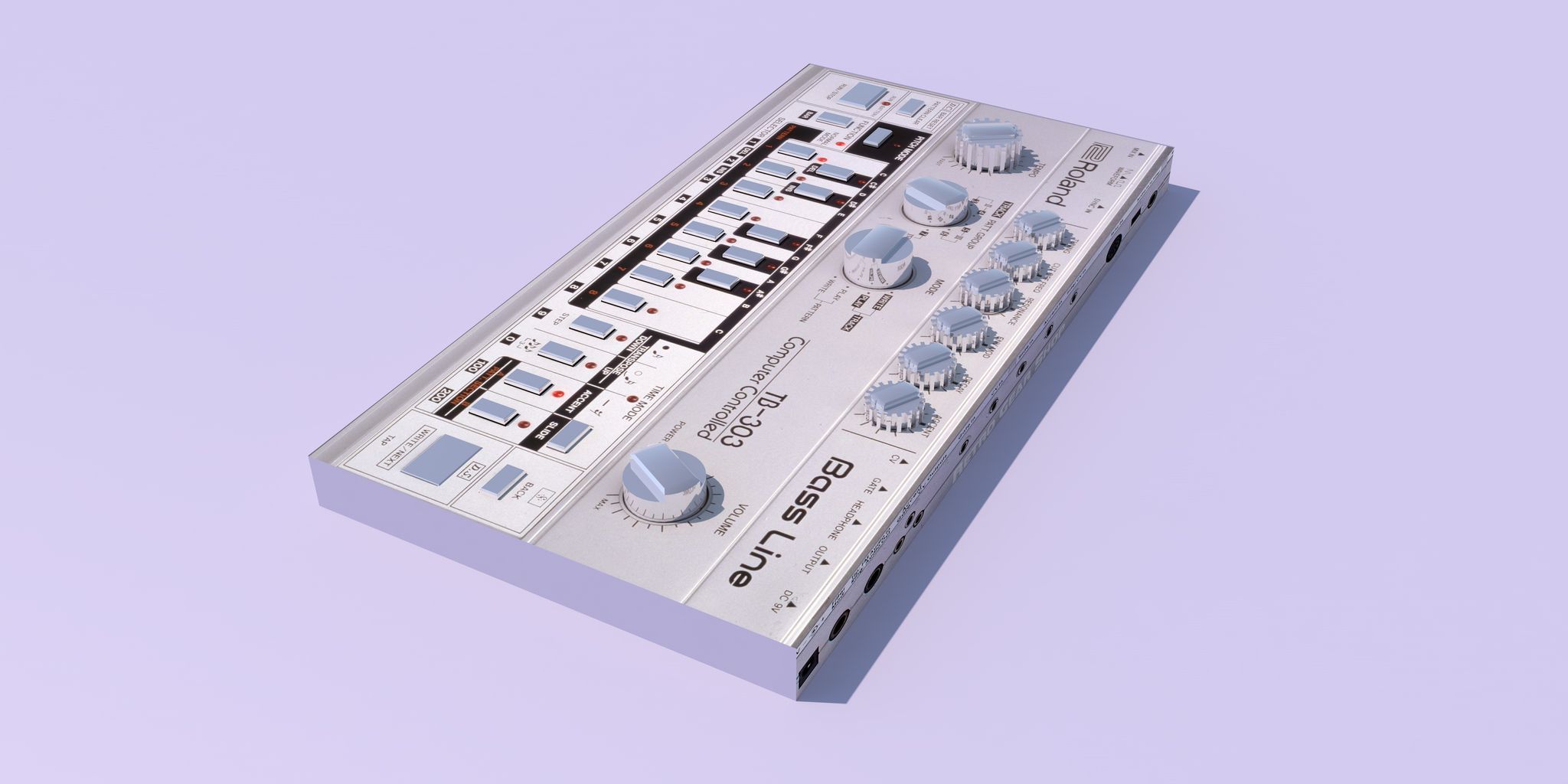A History of the Roland 303 in 10 Tracks
Roland's TB-303 is one of electronic music's accidental heroes. Released in 1981, the small, silver box was designed to emulate a bass guitar and accompany live musicians playing in bars and restaurants. It was relatively expensive at $395 (about $1,200 in today's money) but highly portable – it came in a silver satchel with a strap to carry it around like a handbag, and it could run on batteries.
Unfortunately for Roland, it sounded nothing like a real bass guitar, and the product flopped. They made about 10,000 before discontinuing it in 1984. Many ended up in second-hand music stores in the US and were picked up cheap by producers from the Chicago house scene. They used the bouncy sequencer, the raucous low-pass filter, and the screamy resonance knob to invent a new type of music: acid house.
Sleezy D, I've Lost Control [1986]
Many say Phuture (Earl Smith Jr., DJ Pierre, and Herbert Jackson) invented acid house. Their EP "Acid Trax" (on Chicago's Trax Records, 1987) certainly gave the genre its name. However, Sleezy D's 1986 Trax release "I've Lost Control (Remix)" is an earlier example. If you want to go back even further, in 1982, Indian musician Charanjit Singh released the album "Synthesizing: Ten Ragas to a Disco Beat," which uses a TB-303 in the same squelchy style.
Armando – Land of Confusion [1987]
The late 80s are filled with incredible Chicago acid tracks, most made with little more than a TR-707, a TB-303, and a mic. One classic is Armando's "Land of Confusion," released on Chris "Bam Bam" Westbrook's label in 1987. Funky, brittle, scrappy, it was made when Armando was just 17 years old. Fantastic acid house from a producer who died tragically young, at the age of 26.
Mike Dunn – A Groove [1990]
Hiding right at the end of Mike Dunn's first album, "Free Your Mind" (Desire Records, 1990), "A Groove" is a Latin-tinged banger with a TR-727 beat backed up by two TB-303s and Dunn's hip-house vocals. Mike Dunn released dozens of incredible house records over the following decades and is still DJing and releasing music.
Tricky Disco – Tricky Disco [1990]
Like so much Black American electronic music, acid house found more popularity in Europe than its birthplace. Acid exploded in the UK during the Second Summer of Love in 1988. Sheffield's Warp Records was an early champion, with releases from LFO and this one from Tricky Disco, which reached No.14 in the pop charts. Who were Tricky Disco? They're better known as the fascinating experimental art act Greater Than One.
Plastikman – Plasticity [1993]
Richie Hawtin used a 303 all over his FUSE album "Dimension Intrusion" (Warp, 1993), but it was his first Plastikman release, "Sheet One" (NovaMute, 1993), that evolved acid into something deeper, damper, and darker – music that makes you feel like you're trapped at the bottom of a well.
Hardfloor – Lost In The Silver Box [1993]
In Detroit, 303s had become a staple of the Underground Resistance techno sound. In Europe, 303s had been seized by hard trance acts. The first album by Dusseldorf's Hardfloor, "TB Resuscitation" (Harthouse, 1993), was named after the 303 and dedicated to its designer, Tadao Kikumoto. Its first track, "Lost In The Silver Box," is just layers of distorted 303 over a TR-909 and remains a nuclear bomb of a track.
Become a Gray Area member for access to exclusive perks!
Josh Wink – Higher State Of Consciousness [1995]
By the mid-90s, big beat artists like the Chemical Brothers and Fatboy Slim blended sampled breakbeats with TB-303s. The huge breakdowns and snare rolls captured the maximal spirit of the times and found enormous popularity – none more so than Philadelphia DJ Josh Wink, with "Higher State of Consciousness" (Strictly Rhythm, 1995).
Syntheme – Blue [2007]
Tracks like "Higher States of Consciousness" and Daft Punk's "Da Funk" (Soma, 1995) put 303s into the mainstream, and as digital emulations got better, more producers got a chance to use the sound. By the early 2000s, the high-tempo, screeching 303 buildup began to sound cartoonish. But funky, downtempo acid was happening on labels like London's Breakin' Records, run by Ed DMX of DMX Krew, and Planet Mu, which put out a series of acid EPs by an artist known as Syntheme (now considered an alias for the producer Global Goon).
Tin Man – Nonneo (Donato Dozzy Remix) [2011]
Around the same time, California-born producer Johannes Auvinen started releasing deep, melancholic acid under the name Tin Man. Throughout the 2010s, he built a following for his slow, melodic acid tracks that channel Plastikman's bare 303 compositions. This track from 2011 was on the first release from Acid Test records and featured a beautifully stripped back remix from Donato Dozzy.
Lauren Flax – It's Ours [2018]
Detroit native Lauren Flax is one-half of the Brooklyn band Creep. She's also put out a string of jackin' acid tracks on labels like Nervous Records, Magic City, and The Bunker. This one comes from "Dance Trax Vol. 16" on Unknown To The Unknown – a great label to check out for innovative jackin' house.
Magic bonus track: Charlotte de Witt – Selected [2019]
The tracks above primarily focus on acid house and quirkier users of the TB-303, but the most celebrated purveyor of acid right now is probably Charlotte de Witt. The Belgian DJ and producer has put distorted 303s at the forefront of a sound that's made her one of the most celebrated techno DJs in the world. Here's a thumping piece of acid techno that came out on her label, KNTXT.




























